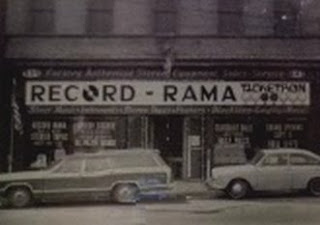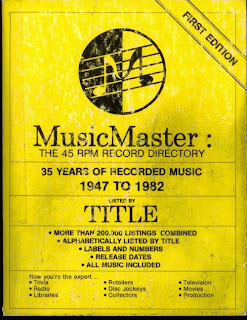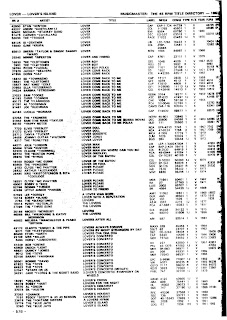Her birth name was Theresa Veronica Breuer. Her father was from Germany and her mother was from the Hungary-Romania area with ancestry in White Russia (Belarus). They lived in Toledo, Ohio, USA. Birth date May 7, 1931 (a girl:).
At age 18 she was married, to Bill Monahan.
In 1949 London Records, based in England, noticed and signed her.
It took two unsuccessful singles before she hit with Music Music Music. 1949 into 1950 it became a #1 international million seller, while she was 18.
Her permanent residence was just north of New York City, and she worked out of New York.
The singles I know of on London, with Billboard US chart positions and 78 numbers, were:
1949- When the Train Came In / A Man Wrote a Song (511)
- (duets with Bobby Wayne) Copper Canyon / Way Back Home (562)
- I Beeped When I Shoulda Bopped / Old Man Mose (563)
1950- Music M.M. (#1) / Copenhagen (604)
- Choo'n Gum (#17) / Honky Tonkin' (678)
- Punky Punkin' / Cincinnatti Dancing Pig (768)
- Molasses Molasses / Grizzly Bear (794)
- You've Got Me Crying Again / He Can Come Back Any Time He Wants To .... (795)
1951- The Thing (#20) / I Guess I'll Have To Dream The Rest (873)
- If You Want Some Lovin' / I've Got the Craziest Feeling (967)
- Lonesome Gal / Counterfeit Kisses (970)
- Oceana Roll / The Wang Wang Blues (1083)
- If You Don't Marry Me / I Wish I Wuz (1085)
- Longing For You (#23) / Jazz Me Blues (1086)

Coral early singles:
1951- 1. Sing Sing Sing / I Don't Care
1952- 2. Lovin' Machine / Noodlin' Rag
- 3. Gonna Get Along Without Ya Now (#25) / Roll Them Roly Boly Eyes
- Til I Waltz Again With You (#1)
1953 - Dancing With Someone (Longing For You) (#17)
- Baby Baby Baby (#12) / I Guess It Was You All The Time (solo version) _ _ (from her movie Those Redheads From Seattle)
- a reissue single #65520 of Music Music Music (Coral rerecording) / Gonna Get Along wo Ya Now
Highlighted song titles are linked to online samples.
There were other singles where she sang in duets and groups.
Musical film shorts
In 1951 Teresa filmed eight musical short films. Two were with the Firehouse Five Plus Two band - Music Music Music and Old Man Mose. Then there were Snader Telescriptions. These involved many artists and were used as television filler. She was backed by Jack Pleis and the Dixieland All-Stars on Music Music Music, Copenhagen, I'm The Lonesomest Gal In Town, If You Want Some Lovin', Honky-Tonkin', and I've Got The Craziest Feeling. She was still on the London label at the time, aged 19.
------ ------
The backing group in the Craziest Feeling film is the Dixieland All-Stars with Jack Pleis on piano, an arranger for record labels.
Movie
 |
| Teresa Brewer publicity photo for Those Redheads From Seattle |
In her one movie role she played a showgirl in Those Redheads From Seattle in 1953.
It seems the hit of Music was processed and mastered at the time to change the sound.
In 1976 London Records reissued 12 songs on the "World Of Teresa Brewer" LP. It has a London recording of Music that's about 20 seconds shorter with a different tone. Maybe they wanted to lower the pitch of the voice by slowing it down. I don't think they had tape at the time, so I don't know the method. The original master was apparently preserved by London and reissued here. Did they realize which edit they were reissuing? In other words the hit issue was slower and longer than what Teresa recorded. Or conversely, did Teresa want to speed up the song in the reissue?
Music! Music! Music! - master from World LP


Child performer
Teresa first performed on a local radio show at age two,
Press here to hear her singing on Major Bowes radio: Darktown Strutters' Ball. This is found on the DVD The Original Amateur Hour hosted by Pat Boone.
Teresa's high school Yearbook entry 1947-48

Publicity photo in New York probably 1948.

Performing on an early television show.
Teresa's home after marriage, in New Rochelle north of New York city.

Teresa in the mid-50s in a rare cheesecake pose (sometime before hair permanents).
Please comment if you have further knowledge.
References:
her fan site is at teresafans.org
Facebook Fans of Teresa Brewer











